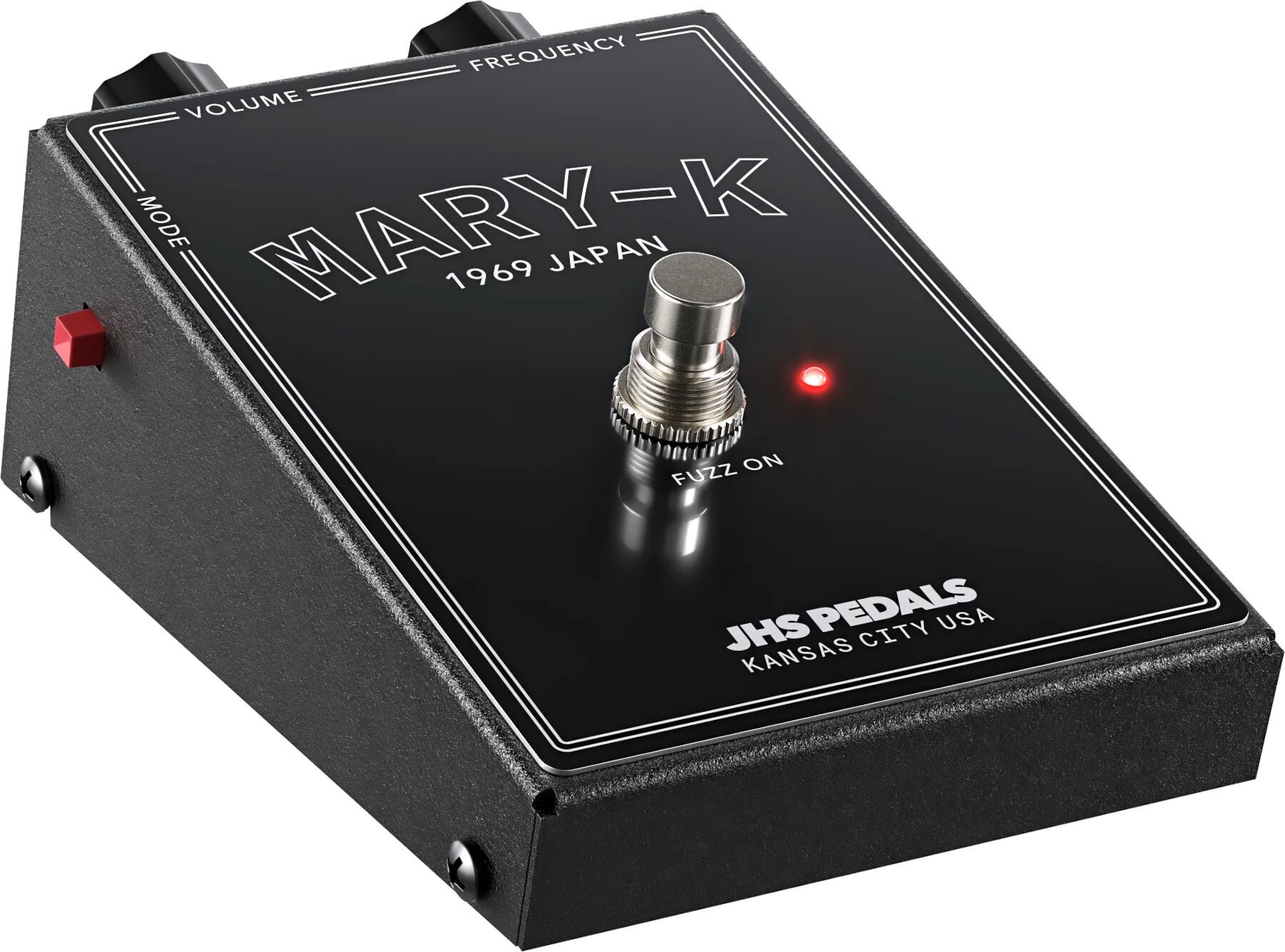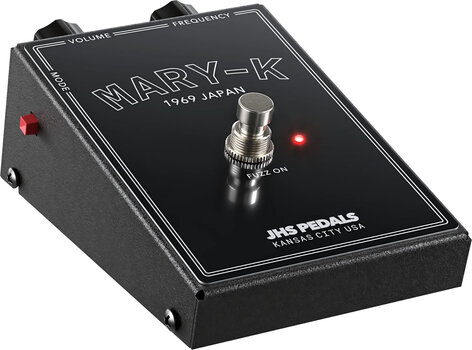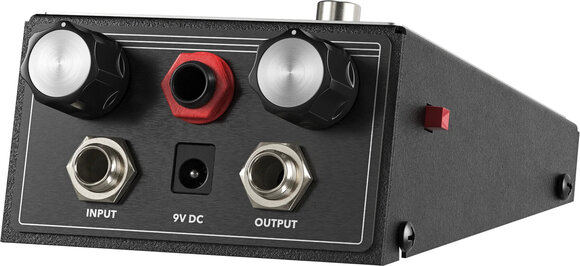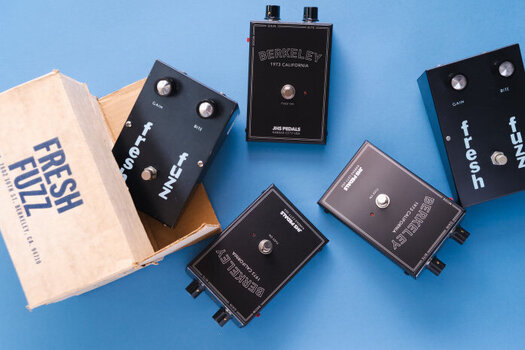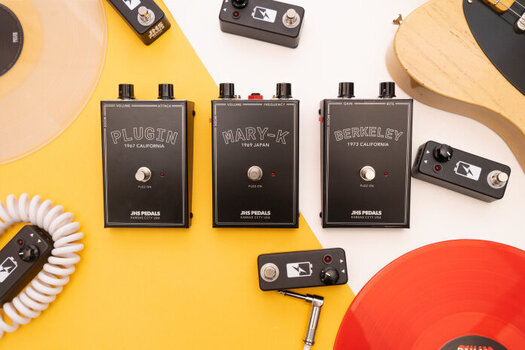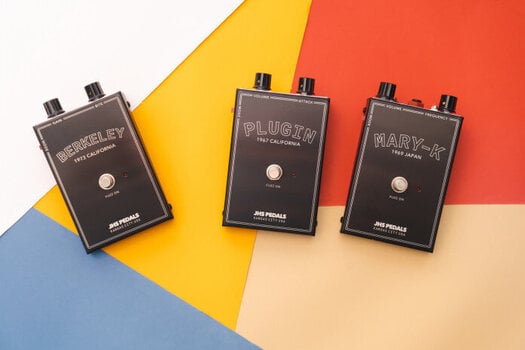Escolha o país para entrega da remessa
-
Todas as categorias
19
Todas as categorias
-
Guitarras
 Guitarras
Guitarras- Mostrar tudo
- Guitarras elétricas
- Guitarras acústicas
- Guitarras clássicas
- Guitarras eletroacústicas
- Guitarras para crianças
- Guitarras para principiantes
- Guitarras elétricas para principiantes
- Guitarras para canhotos
- Ukuleles
- Instrumentos de Bluegrass
- Combos para guitarra
- Amplificadores de guitarra
- Cabinets de guitarra
- Efeitos para guitarra
- Cordas para guitarras
- Malas e sacos para guitarra
- Afinadores
- Pickups de guitarra
- Peças de substituição para guitarras
- Correias para guitarra
- Acessórios de guitarra
-
Baixos

-
Teclas

-
Baterias

-
Mics
 Mics
Mics- Mostrar tudo
- Microfones dinâmicos
- Microfones condensadores
- Microfones USB
- Microfones para podcasts
- Microfones retro
- Microfones de fita
- Microfones condensadores de diafragma pequeno
- Microfones de bateria
- Conjuntos de microfones para bateria
- Microfones de conferência
- Microfones para jornalistas
- Microfones de vídeo
- Microfones para PC
- Microfones de medição
- Instalações de microfones
- Microfones de limite
- Microfones estéreo
- Acessórios para microfone
-
Estúdio
 Estúdio
Estúdio- Mostrar tudo
- Interfaces de áudio
- Microfones de estúdio
- Elementos acústicos de estúdio
- Monitores de estúdio
- Auscultadores de estúdio
- Gravadores digitais
- Controladores DAW
- Software de estúdio
- Acessórios de estúdio
- Amplificadores para auscultadores
- Mobiliário de estúdio
- Suportes e apoios para PC
- Conversores de áudio digital
-
PA

-
Luz
 Luz
Luz- Mostrar tudo
- Conjuntos de iluminação
- Projetores rotativos
- Luzes PAR
- Efeitos de iluminação
- Máquinas de efeitos e acessórios
- Lasers
- Barras de LED
- Painéis LED
- Estroboscópio
- Ocultadores de luz
- Técnicas de UV
- Luzes de teatro
- Iluminação decorativa
- Luzes de estúdio
- Controladores - Luz e Dimmers
- Suportes de iluminação
- Malas e sacos para equipamento de iluminação
- Cabos de iluminação
- Fontes de luz
- Acessórios de iluminação
- Luzes circulares
-
DJ

-
Acessórios

-
Tradicional

-
Arcos
 Arcos
Arcos- Mostrar tudo
- Violinos
- Violas
- Violoncelos
- Contrabaixos
- Violinos elétricos
- Violas elétricas
- Violoncelos elétricos
- Contrabaixos elétricos
- Acessórios para violinos
- Acessórios para violas
- Acessórios para violoncelos
- Acessórios para contrabaixo
- Bolsas e estojos para arco
- Pickups para instrumentos de corda
- Afinação
- Peças sobressalentes e outros acessórios
-
Instrumentos de sopro
 Instrumentos de sopro
Instrumentos de sopro- Mostrar tudo
- Gravadores
- Flautas transversais
- Saxofones
- Trompetes, cornetas e fliscornes
- Clarinetes
- Trombones
- Tubas e sousafones
- Bombardinos
- Trompas, trompetes, buzinas e sirenes
- Fagotes
- Oboés
- Trompas tenor e barítono
- Trompa de caça
- Syntezatory dęte
- Outros instrumentos de sopro
- Harmónicas
- Apitos de efeito
- Apitos tradicionais
- Flautas de Pan
- Ocarinas
- Kazoos
- Acessórios - Sopro
-
Fotografia e vídeo
 Fotografia e vídeo
Fotografia e vídeo -
Hi-Fi

-
Gira-discos

-
Auscultadores
 Auscultadores
Auscultadores- Mostrar tudo
- Auscultadores - todos os tipos
- Auscultadores sem fios e Bluetooth
- Auscultadores on-ear
- Auscultadores intra-auriculares
- Auscultadores Ear Loop
- Auscultadores com microfone
- Fones de ouvido com cancelamento de ruído ativo
- Auscultadores de condução óssea
- Auscultadores gaming para PC
- Auscultadores de criança
- Auscultadores para deficientes auditivos
- Auscultadores de escritório
- Proteção auditiva
- Acessórios para auscultadores
-
Áudio

-
Merchandising

-
-
Guitarras
Guitarras
- Mostrar tudo
-
Promoções de guitarras
-
Guitarras elétricasGuitarras elétricas
- Mostrar tudo
- Promoções guitarras elétricas
- Guitarras elétricas - Todos os formatos
- Modelos ST
- T-Models
- Modelos de corte único
- Modelos Super-ST
- Hard & Heavy
- Corte duplo
- Guitarras semiacústicas
- Jaguar
- Jazzmaster
- Mustang
- Formas não tradicionais
- Guitarras de 7 cordas
- Guitarras de 8 cordas
- Guitarras sem cabeça
- Guitarras multiescala
- Guitarras com modelação, MIDI e USB
-
Guitarras acústicas
-
Guitarras clássicas
-
Guitarras eletroacústicas
-
Guitarras para crianças
-
Guitarras para principiantes
-
Guitarras elétricas para principiantes
-
Guitarras para canhotos
-
Ukuleles
-
Instrumentos de BluegrassInstrumentos de Bluegrass
-
Combos para guitarra
-
Amplificadores de guitarraAmplificadores de guitarra
- Mostrar tudo
- Amplificador de modelação
- Cabeças de amp. a transistor
- Cabeças de amp. a valvula
- Cabeças de amp. híbrido
- Pré-amplificadores e racks de amplificadores para guitarra
- Amp. de auscultador para guitarra
- Interruptores de pé e controladores
- Tubos de vácuo para amplificadores de tubos
- Sacos para amplificadores
- Atenuadores e caixas de carga
-
Cabinets de guitarra
-
Efeitos para guitarraEfeitos para guitarra
- Mostrar tudo
- Multiefeitos para guitarras
- Overdrives / Distorções / Fuzzes / Boosters
- Pedais de delay / reverb
- Loopers / Samplers
- Pedais Wah-Wah
- Choruses / Flangers / Phasers
- Harmonizador/pitch shifter/octaver
- Compressores / Sustainers
- Sintetizador de guitarra
- Pedais de volume
- Noise Gates / supressores
- Tremolos / Vibratos
- Equalizadores
- Pedais diversos
- Pedal/Caixa Stomp
- Pedalboards e bolsas para efeitos
- Buffer Bay
- Efeitos para guitarras acústicas
- Efeitos para guitarra - Todos os tipos
- Acessórios para efeitos de guitarra
- Fontes de alimentação para efeitos
-
Cordas para guitarras
-
Malas e sacos para guitarraMalas e sacos para guitarra
- Mostrar tudo
- Sacos para guitarras elétricas
- Sacos para guitarras acústicas
- Sacos para guitarras clássicas
- Sacos para ukulele
- Sacos para banjo
- Sacos para bandolim
- Estojos para guitarras elétricas
- Estojos para guitarras acústicas
- Estojos para guitarras clássicas
- Estojos para ukulele
- Estojos para banjo
- Estojos para bandolim
-
Afinadores
-
Pickups de guitarra
-
Peças de substituição para guitarrasPeças de substituição para guitarras
-
Correias para guitarra
-
Acessórios de guitarra
-
Baixos
Baixos
- Mostrar tudo
-
Promoções baixos
-
Baixos elétricos
-
Baixos acústicos
-
Cabeças de amplif. para baixos
-
Cabinets para coluna de baixoCabinets para coluna de baixo
-
Combos de baixo
-
Efeitos de graves
-
Cordas para baixos
-
Estojos e bolsas para baixosEstojos e bolsas para baixos
-
Pickups para baixos
-
Peças de substituição para baixosPeças de substituição para baixos
-
Teclas
Teclas
- Mostrar tudo
-
Descontos em teclados
-
Pianos digitais
-
Pianos de cauda digitais
-
Teclados
-
Pianos de palcoPianos de palco
-
Sintetizadores e estações de trabalho
-
Teclados principais MIDI
-
Controladores MIDI
-
Pianos
-
Pianos de cauda
-
Acordeões
-
Melódicas
-
Órgãos elétricosÓrgãos elétricos
-
Amplificadores de teclado
-
Acessórios para teclasAcessórios para teclas
-
Baterias
Baterias
- Mostrar tudo
-
Promoções baterias
-
Bateria acústica
-
Baterias eletrónicasBaterias eletrónicas
- Mostrar tudo
- Kits de bateria eletrónica
- Módulos de som de bateria eletrónica
- Bateria eletrónica compacta
- Pads individuais de bateria eletrónica
- Hardware para bateria eletrónica
- Cabeças de malha para baterias eletrónicas
- Triggers de bateria
- Pads de sampling e multipads
- Monitorização bateria eletrónica
-
Hardware de bateriaHardware de bateria
- Mostrar tudo
- Pedais de bombo
- Suportes de címbalo girafa
- Suportes de címbalos retos
- Suportes de pratos de choque
- Conjuntos de hardware
- Bancos de bateria
- Suportes de caixa
- Suportes multiusos
- Címbalo girafa, braços
- Suportes de timbalão
- Suportes e fixações de gongos
- Grampos múltiplos
- Equipamentos para percussão
- Suportes de bateria acústica
- Suportes para gongos
-
PercussãoPercussão
- Mostrar tudo
- Congas
- Bongos
- Djembés
- Cájons
- Darbukas
- Kalimbas
- Handpans / Tambor de língua de aço
- Meditação e musicoterapia
- Tongue Drums / Tambores de língua
- Doumbeks
- Ibo Drums
- Instrumentos de samba
- Timbales
- Instrumentos rituais
- Percussão para criança e conjuntos de percussão
- Xilofones, metalofones e carrilhões
- Tambores de mão
- Pandeiretas
- Sinos de trenó
- Carrilhões
- Triângulos
- Cowbells
- Agogôs
- Blocos
- Clavas
- Pratos de dedo
- Agitadores
- Maracas
- Cabasas
- Caxixis
- Ganzá
- Reco-recos
- Vibraslaps
- Castanholas
- Didgeridoo
- Paus de chuva
- Berimbau de boca
- Outras percussões
-
Baquetas e escovasBaquetas e escovas
-
Cabeças de bateriaCabeças de bateria
- Mostrar tudo
- Conjuntos de cabeças de bateria
- Cabeças de bateria transparentes
- Cabeças de bateria revestidas
- Cabeças de bateria coloridas
- Cabeças de bateria ressonantes
- Cabeças de bateria para instrumentos de percussão
- Cabeças de bateria para orquestra
- Cabeças de bateria de marcha
- Amplificadores de banjo
- Cabeças de bateria em malha
- Sistema amortecedor
- Proteção de cabeça para bombo
-
Címbalos
-
Acessórios de bateriaAcessórios de bateria
- Mostrar tudo
- Bolsas e estojos para baterias
- Bolsas e estojos para percussão
- Acessórios para címbalos
- Pads de treino
- Chaves de afinação para bateria
- Afinadores de bateria
- Tapetes de bateria
- Anéis de reforço
- Auscultadores para bateristas
- Luvas para baterista
- Div. Acessórios de bateria
- Suportes para baquetas
- Limpeza do tambor
-
Bateria de orquestra
-
Tambores para marchar e aplaudir
-
Peças sobressalentes para hardware de bateriaPeças sobressalentes para hardware de bateria
- Mostrar tudo
- Batedores / Martelos
- Acessórios para pedais de bateria
- Aros e cascos de bateria
- Rolamentos de tambor e bandas de borracha
- Parafusos do tambor de reserva
- Embraiagens para pratos de choque
- Sistemas de montagem de timbalão
- Memory Locks
- Fios para caixa
- Tensor de caixa
- Outras peças sobressalentes de bateria
-
Estúdio
Estúdio
- Mostrar tudo
-
Promoções estúdio
-
Interfaces de áudio
-
Microfones de estúdio
-
Elementos acústicos de estúdio
-
Monitores de estúdio
-
Auscultadores de estúdio
-
Gravadores digitais
-
Controladores DAW
-
Software de estúdioSoftware de estúdio
-
Acessórios de estúdio
-
Amplificadores para auscultadores
-
Mobiliário de estúdio
-
Suportes e apoios para PC
-
Conversores de áudio digital
-
PA
PA
- Mostrar tudo
-
Promoções live sound
-
Mesas de mistura
-
Altifalantes
-
Amplificadores de potência
-
Sistemas sem fiosSistemas sem fios
- Mostrar tudo
- Microfones de mão sem fios
- Sistemas sem fio – headset
- Sistemas sem fio para lapela
- Sistemas sem fios - Combi
- Sistemas sem fios para guitarra e baixo
- Sistemas sem fio para instrumentos
- Sistemas sem fios - PA
- Componenetes para sistemas sem fio
- Sistemas de guia turístico sem fios
- Sistemas de intercomunicação
- Sistemas sem fios para microfones XLR
-
Processadores de efeitos e de sinaisProcessadores de efeitos e de sinais
-
Equipamento de instalação
-
Monitorização intra-auricularMonitorização intra-auricular
-
Megafones
-
Sacos, capas e acessórios para PA
-
Áudio e vídeo
Áudio e vídeo
- Mostrar tudo
-
Sale Deals and Offers
-
Fotografia e vídeoFotografia e vídeo
-
Hi-Fi
-
Gira-discos
-
AuscultadoresAuscultadores
- Mostrar tudo
- Promoções auscultadores
- Auscultadores - todos os tipos
- Auscultadores sem fios e Bluetooth
- Auscultadores on-ear
- Auscultadores intra-auriculares
- Auscultadores Ear Loop
- Auscultadores com microfone
- Fones de ouvido com cancelamento de ruído ativo
- Auscultadores de condução óssea
- Auscultadores gaming para PC
- Auscultadores de criança
- Auscultadores para deficientes auditivos
- Auscultadores de escritório
- Proteção auditiva
- Acessórios para auscultadores
-
YouTube e Podcast e Stream
-
Áudio
-
Impressão 3D
-
Baterias/pilhas
-
Merchandising
-
Óticas
-
Inteligente
-
Acessórios para telemóveis
-
Suportes de armazenamentoSuportes de armazenamento
-
Acessórios para jogosAcessórios para jogos





